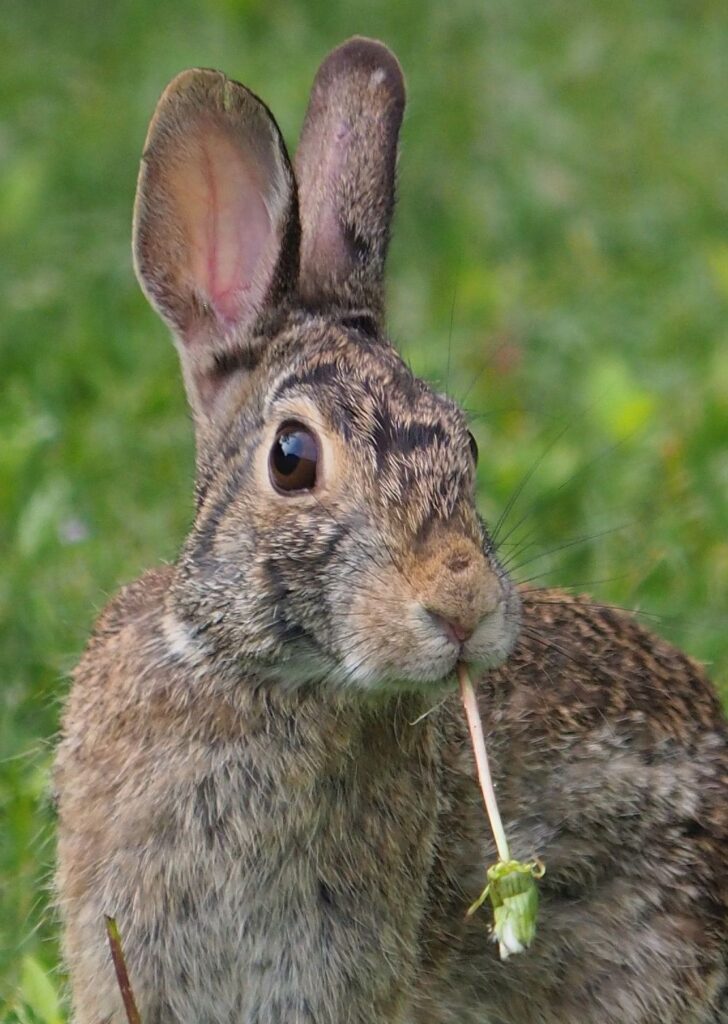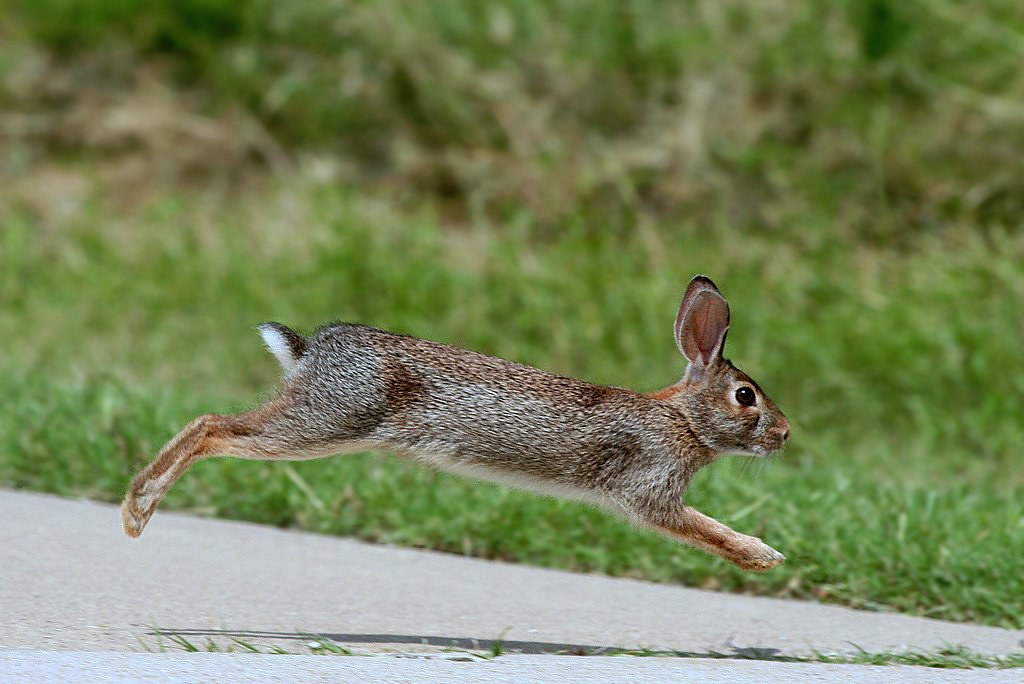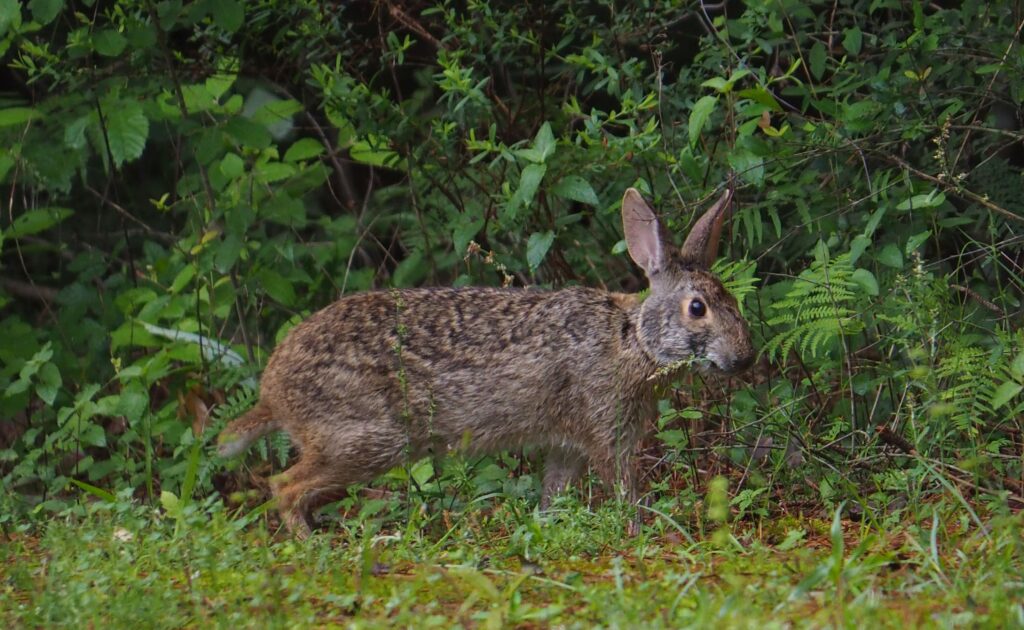by Shaila Palamand, PWLTMN Member

One of the great benefits of the temperate climate of East Texas is our ability to enjoy nature and observe wildlife even during the winter months. Although some species migrate south to spend the season in warmer temperatures, many stay in the Pineywoods region throughout the year, adapting to colder conditions as needed. Rabbits, for example, are year-round residents and remain active during the winter, foraging for food and gearing up for their long breeding season, which can begin as early as January.
There are two rabbit species native to East Texas: the Eastern Cottontail Rabbit (Sylvilagus floridanus), and the Swamp Rabbit (Sylvilagus aquaticus). These critters are both part of the Cottontail genus and look very similar at a glance, but do have distinct physical features and habitat preferences.
Of the two species, the Eastern Cottontail (appropriately named for its trademark fluffy white tail) is more commonly seen, as it can thrive in a wider variety of habitats, from fields and gardens to woodlands. On the other hand, Swamp Rabbits tend to stay in areas that may be less trafficked by human observers; they prefer wetland areas such as riverbanks and marshes (making them appropriately named as well). Although Swamp Rabbits are larger overall (averaging 3-6 lbs vs. the 2-3 lb Eastern Cottontail), they have proportionally shorter hind legs, which help them navigate swampy conditions more effectively. Similarly, while both species have large, upright dish-shaped ears, those of Swamp Rabbits are less pointy and relatively smaller in proportion to their bulkier bodies.
Coloring is also a notable difference between the Swamp Rabbit and the Eastern Cottontail, with the former being darker and more mottled and having a cinnamon-colored eye-ring vs. the whitish eye ring of the Eastern Cottontail. As may be guessed, their tail coloring also differs; the Swamp Rabbit’s tail is less reminiscent of a fluffy white cotton ball (although some white might be present). Both species shed less and develop a denser fur coat in the winter that may appear grayer than their non-winter coats.

Note the fluffy white tail, white eye ring and large ears vs. body size.
For many animals, finding food during the winter can be challenging. Both East Texas rabbit species adapt to winter conditions by augmenting their diets with twigs and bark when green vegetation becomes less plentiful. Eastern Cottontails hunker down in dense brush or thickets for shelter and warmth, mostly foraging for food during dawn and dusk in order to avoid predators. Swamp Rabbits also forage in low light conditions, usually at night, but they tend to stay closer to wetland areas, where they can escape from predators by (skillfully) swimming away.
Baby Eastern Cottontails are born naked and blind, and aren’t ready to leave their nests for a couple of weeks. Baby Swamp Rabbits are also born blind but with a full coat of fur, and are able to leave their nests in just 2-3 days, when their eyes open.
Both of these species are awfully cute, of course. You can see them year-round, but if you’re lucky, you might catch them in January or February preparing for breeding season with their impressive courtship displays, which include running, leaping, and sometimes punching each other in the face(!) But if not in person, you can check out “Cottontails Cavorting” on video: https://www.youtube.com/watch?v=VdFGhqMIGoE
Resources:
https://landmarkwildlife.com/wild-rabbits-and-hares-in-texas/
https://tpwmagazine.com/archive/2004/jun/ed_4/
https://www.welcomewildlife.com/all-about-cottontail-rabbits/
https://tpwd.texas.gov/publications/nonpwdpubs/introducing_mammals/rabbits/
https://www.nwf.org/Educational-Resources/Wildlife-Guide/Mammals/Swamp-Rabbit



